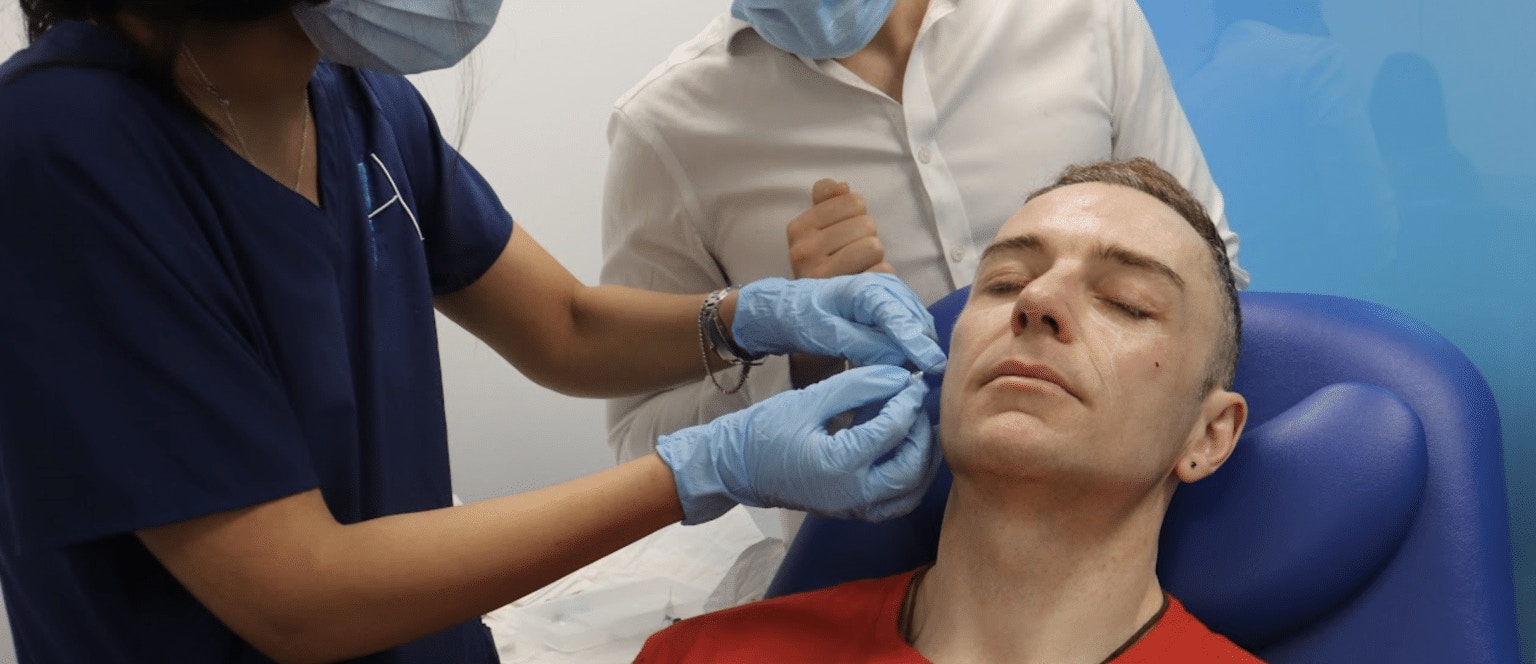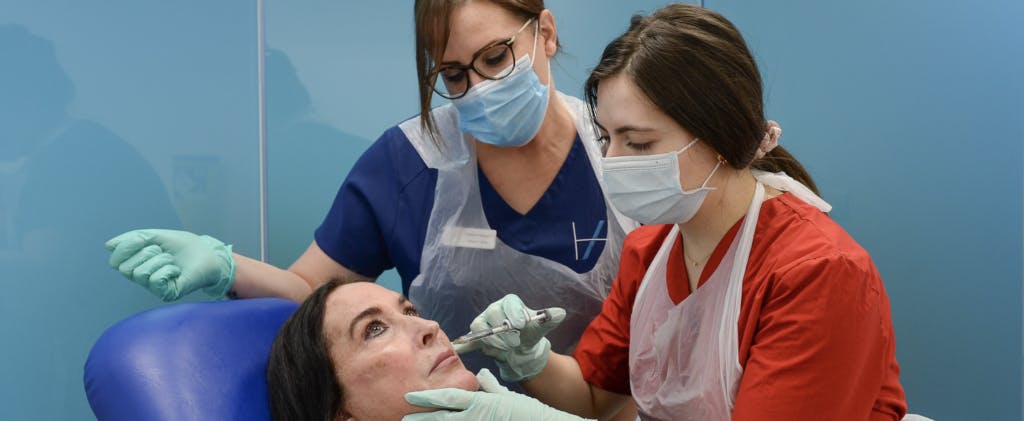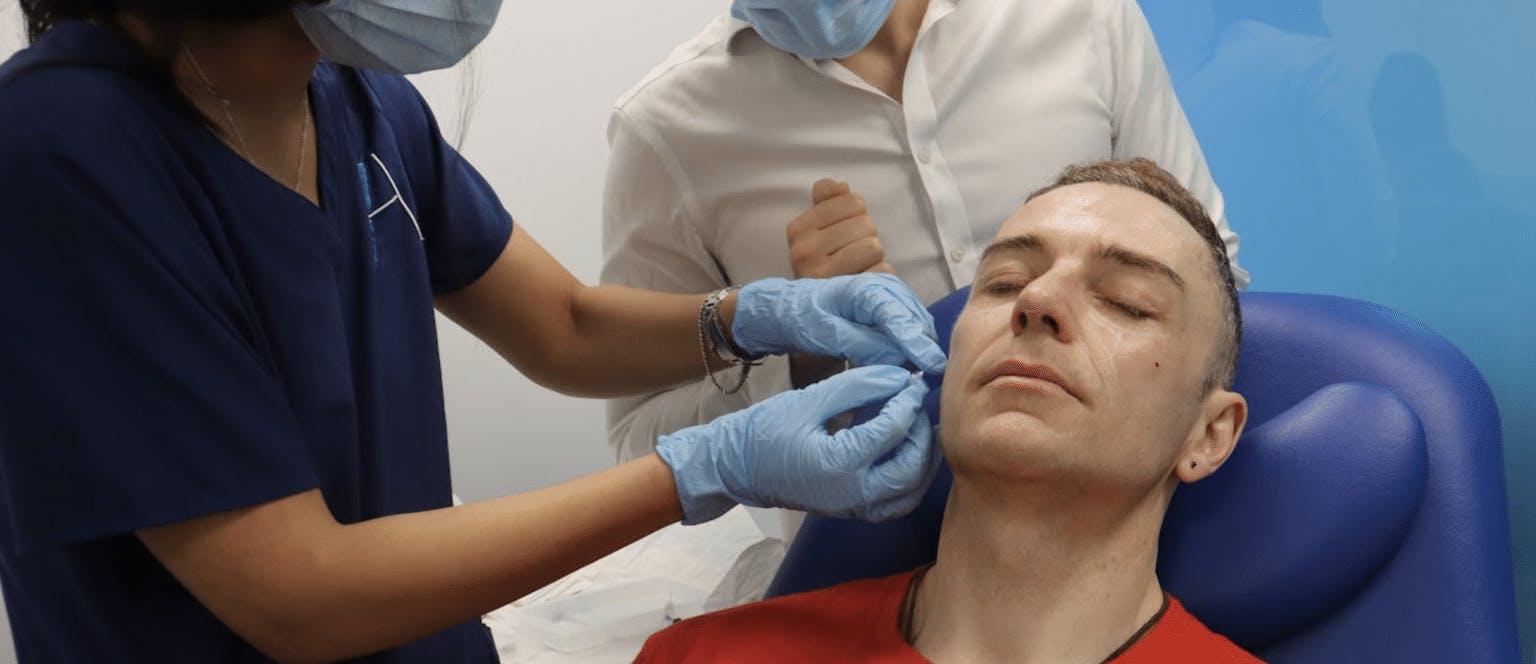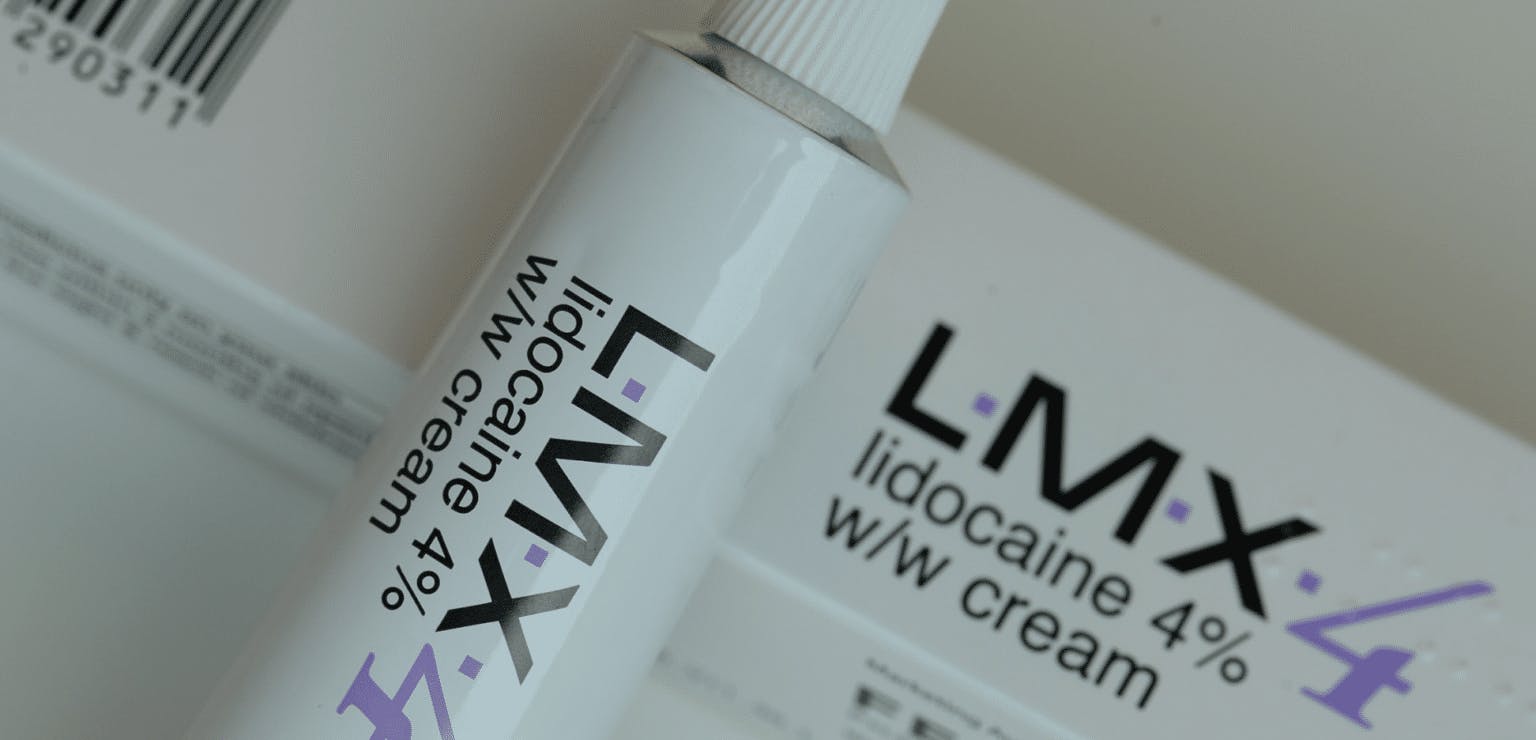Aesthetics Specialist’s Tips On Using A Cannula

Once you have mastered the art of injecting using a needle, you may want to move on to using a cannula. There are many reasons for cannulation when administering injectables, not least that it can reduce the risk of adverse events and minimise bruising.
Natalie Haswell, senior clinical trainer at Harley Academy and the owner and practitioner at Haswell Aesthetics in Colchester, Essex (pictured mentoring, below), recently held an Ask Me Anything (AMA) session about cannula use on our Instagram channel.

In case you missed it, here are some of Nat’s Q&As, including her best tips on using a cannula for dermal filler…
What cannulas do you use at Harley Academy?
We use 25 gauge cannulas, either in 38mm or 50mm lengths because different length cannulas are used in different areas of the face. We use these due to the scientific evidence that suggests they can significantly reduce the risk of vascular occlusion. This risk is not eliminated but it is severely reduced.
Which aesthetics training courses teach cannula technique?
At Harley Academy we teach cannula use – the theory, at least – from day one. We talk to students all about using a cannula, what they are, how they work. Then, in mentoring sessions and our Foundation Training eLearning you'll learn to use a cannula safely. The one-to-one training in mid-face and cannula eLearning module is also incorporated into our Level 7 Diploma in Botox & Dermal Fillers course.
Which cannula length do you recommend?
We recommend a 25 gauge cannula – the same as the ones we use and teach with – because there is currently more scientific research to say these offer a reduction in vascular occlusion risk.
Depending on the area of the face being treated you’ll want to vary your length. So, if you’re treating the preauricular area or the jaw, a 50mm cannula is advisable. If you’re treating a smaller area, we’d use a 38mm.

Does using a cannula for dermal filler affect the end results?
Some aesthetics practitioners have been known to say that a needle can give you more defined or specific results compared to a cannula, in the lips for example. However, if you’re using your cannula appropriately, in the correct layer with the correct product, there’s no reason your result should not be just as good as it would be with a needle.
Really, it just depends how good you are with a cannula! For instance, how well you can retrograde thread filler with a cannula, whether you’re going to do a bolus with filler… It’s all about you, your dexterity, experience and expertise.
What size combo entry needle and cannula gauge do you use?
We use a 23 gauge entry needle. Obviously this is larger to allow for a 25 gauge cannula to easily be inserted through the entry point.
Which treatment areas are better to treat with a cannula instead of a needle?
There are no areas that are better to treat with a cannula over a needle. But, as cannulas offer a reduced risk of vascular occlusion, we do recommend using this method as often as possible.
What do patients think of being treated with a cannula?
I’d say about 95 per cent of patients prefer being treated with a cannula due to the decreased risk of bruising, swelling, trauma and vascular occlusion. There are some people who dislike the “wiggling” sensation of the tube moving through the tissues, but the end outcome is much more manageable.

How do you place your numbing agent when using a cannula?
There are multiple options here but essentially it depends on what works best for you and your patient. There are many factors to consider. You may not want to use a numbing agent at all or you may want to use a topical numbing cream such as LMX at the site of the entry needle. Some practitioners apply it all over the area the filler is being placed. Really, you need to look at the evidence and weigh up the risks versus benefits.
More lateral injections, such as those around the gonial angle, the preauricular area, the temple, these can have less discomfort so it’s up to you to decide with your patient how best to manage this.
Personally, I tend not to use numbing cream except for when I teach. This is because a student is injecting and the patient may be a little bit more nervous.
Some injectors say LMX may cause vasoconstriction and/or discolouration of the skin, so it depends on your patient, your experience, where you’re treating and what you’re using. Obviously filler can be bought with and without lidocaine, too.
The main consideration is your patient; how is their pain threshold? How do you think they’ll manage? Obviously there are more nerve endings around the mouth so this is going to be more sensitive. Again, I think this is something you should discuss and decide with your patient during consultation.
When can I start using a cannula after foundation training?
If you’ve just completed your Foundation Training and feel confident that you are ready to start using a cannula safely, then please do so.
How long did it take you to feel really confident injecting with a cannula?
Not very long! The fact that it significantly decreases the risk of vascular occlusion, bleeding, swelling and bruising filled me with confidence in the first instance.
Secondly, because I’ve worked in trauma and orthopedics, general surgery, ENT and community nursing in the NHS for almost 20 years, my medical background and my practical competence also gave me confidence. I’ve got good dexterity so that along with lots of practice meant it didn’t take long to feel confident with a cannula.
What’s your best advice for new aesthetics practitioners starting to inject with a cannula?
Respect the anatomy and the tissues. Once you’ve made your entry point with the 23 gauge needle, pinch and support the face to allow the cannula to wriggle through the tissues. Gently twist the cannula very slowly through the tissues without vigorously pushing or pulling. This will help you to avoid causing trauma and increasing the chance of bleeding and bruising.
If you would like to really focus on your cannula skills and build your confidence in using this injection technique, our Level 7 Diploma in Botox & Dermal Fillers offers this. You'll get the opportunity to observe a injecting demonstration and treat patients as part of your logbook cases. This will allow you to inject safely and effectively.
All information correct at the time of publication
Download our full prospectus
Browse all our injectables, dermal fillers and cosmetic dermatology courses in one document
By submitting this form, you agree to receive marketing about our products, events, promotions and exclusive content. Consent is not a condition of purchase, and no purchase is necessary. Message frequency varies. View our Privacy Policy and Terms & Conditions
Attend our FREE open evening
If you're not sure which course is right for you, let us help
Join us online or in-person at our free open evening to learn more
Our Partners













STAY INFORMED
Sign up to receive industry news, careers advice, special offers and information on Harley Academy courses and services

